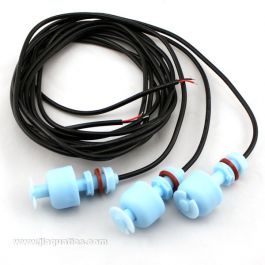- Joined
- Jul 26, 2018
- Messages
- 499
- Reaction score
- 213
How many optical and temp sensors this board supports?
Follow along with the video below to see how to install our site as a web app on your home screen.
Note: This feature may not be available in some browsers.
How many optical and temp sensors this board supports?
Any news?
So, when we'll able to buy this board?I'll have some news to report shortly
Been hammering on a bunch of projects in parallel (lighting and stand-alone controllers) which ate some of the time, but I ended up with a lot more R&D time due to the current situation.
Super duper excitingSome updates:
Tentative name: ReefMod
Expansion:
One open topic is expand-ability beyond 5 modules (or for the larger modules which may take multiple slots). The RevD Pico board contained an I2C terminal header with an active line driver, which both brought the I2C up to 5V and allowed for longer cabling runs which normal I2C wouldn't be able to handle. Right now this isn't on the board, since it does save a few dollars off the sales price and simplifies assembly (and isn't universally applicable).
My current plan is to make a "rpi-less" expansion case and board for the same module formfactor, which can be attached to the I2C bus (or something similar), but this would also require one expansion module to be fitted in the main board with the Raspberry Pi. I'm hunting around for small connectors I can try to shoe horn in to make it not take up a module slot, but I'm not sure the cost burdening is worth it or it makes sense.
The challenge comes with I2C addressing. The REEFMOD connector currently features 3 address select pins - adding more would be a waste on a 0.1" header. The three was designed around the PCA9685 select pins and other devices - most don't have more than 3 pins if they have any at all, and 3 pins allow us to address 8 devices.
Other options include an I2C switch to allow us to address different bus segments, but we'd need to work with @Ranjib to figure out how to use this in a generic way. Its not a great solution as it would make any I2C access, including the RTC, suddenly modal so I'm not a huge fan of this approach.
We can also consider only allowing for only programmable ID devices on expansion modules (where you'd need to run some tool to shift the ID), require jumpers or DIP switches on modules to set ID (if applicable) or develop some sort of I2C inter-poser device which repeats the bus virtually except for an address shift (which would be challenging as the Raspberry Pi is very intolerant of clock stretching on I2C).
I'm currently leaning on the programmable logic expansion module approach if needed - you can still load 5 slots full of PCA9685 driven modules, and as long as the IDs of any chips on the modules don't overlap allows filling in different functions.
Module mounting:
I'm looking at cost effective header stacks to try to push the module height to the top of the case, which gives the most room for connectors as well as allowing the module to extend over the Raspberry Pi at the back of the case. This will slightly impact WiFi connectivity if a module is over the Pi, but not dramatically.

I've included a copious number of M2.5 holes for standoffs and mechaincal mounting - the goal is that this is user selectable and no more than 1-2 are needed.

I'll be able to install this to the board? All 3?

Simplicity Float Switch Kit - 3 Pack
Float switch kit designed to be used with the Sumplicity Dosing container.www.jlaquatics.com
I had contacted you earlier about a revisionD board. Waiting for this
Anyways - thinking about getting started and getting a Pi-0w to play around with - and a couple of the DS18B20 probes you recommend (had a heater issue the other day, and think I could figure out monitoring myself).
Then I noticed this : :Not for use in salt water or other corrosive environments. These are not IP rated, and are not guaranteed for long term/high pressure usage."
Have these held up for people? Or are there better options?
